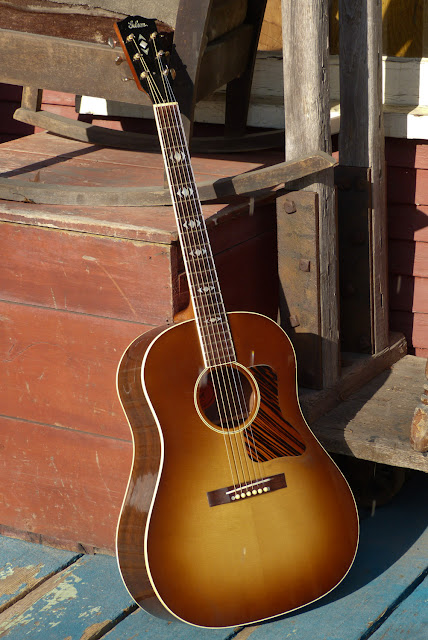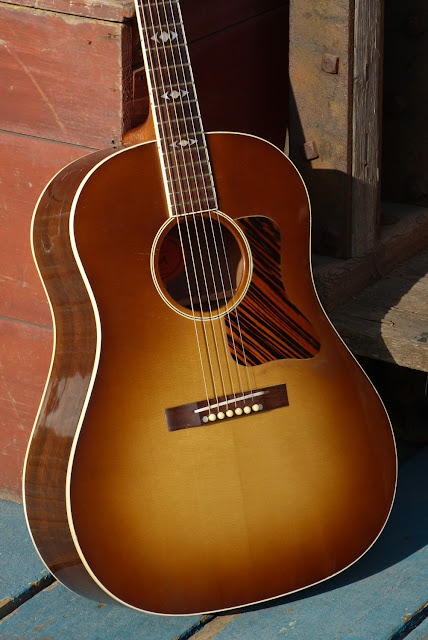2008 Gibson Advanced Jumbo "Gold" Slope-Dread Guitar
I'm increasingly wowed by modern Gibsons that are built with more 30s-style specs. This Advanced Jumbo also has the "wow" factor of figured walnut back and sides which identify it as a member of a 300-count "limited run." For a flatpicker -- especially those of the old-time, country-chord-banging, or zippy run types -- this is an incredibly good guitar. It has rumble, punch, sustain, and clarity all mixed-up with that quintessential Gibson "grrrruh" that you hear ind the mids.
There are, however, the usual downsides to a lightly-built, long-scale slope-dread with traditional bracing -- the top has "domed" under the bridge, the bridge itself was almost off when this came in, and the neck angle is no longer as healthy as it used to be. All this happened in 8 years! That's no surprise to me (you tend to realize why vintage bracing and build patterns changed over time once you see enough old stuff change in the same way) but it will constantly be a surprise to owners who may not take quite good enough care to ameliorate those same design flaws while owning something based on them.
At any rate, this got its bridge reglued, a light fret level/dress, a new saddle, and a good setup. The saddle is darn low but it still plays where the owner needs it to play. He runs medium strings (I call them guitar-killers but if you want the sound, that's the way to get it) and pounds it -- which the guitar seems to enjoy as evidenced by its throaty, huge voice.
The sunburst is pretty, isn't it? This guitar is certainly a "looker." I love the return to firestripe tortoise pickguards, too, on these retro models.
I've always enjoyed the clunky, chubby, 30s-style Gibson-script inlays.
I've also always liked the deco fretboard inlays, too, on AJs.
String-ramping and a new, low, compensated saddle lets the owner squeak by without the need for a neck reset. In a not to modern building techniques, the pearl dots at the bridge do not hide bridge-bolts as they would have in the 30s.
The figured walnut on the back and sides is awesome. I've always enjoyed walnut as a tonewood and have been glad to see it coming into vogue on newer instruments. To my ears it usually responds like a fuller-sounding mahogany.



















Comments